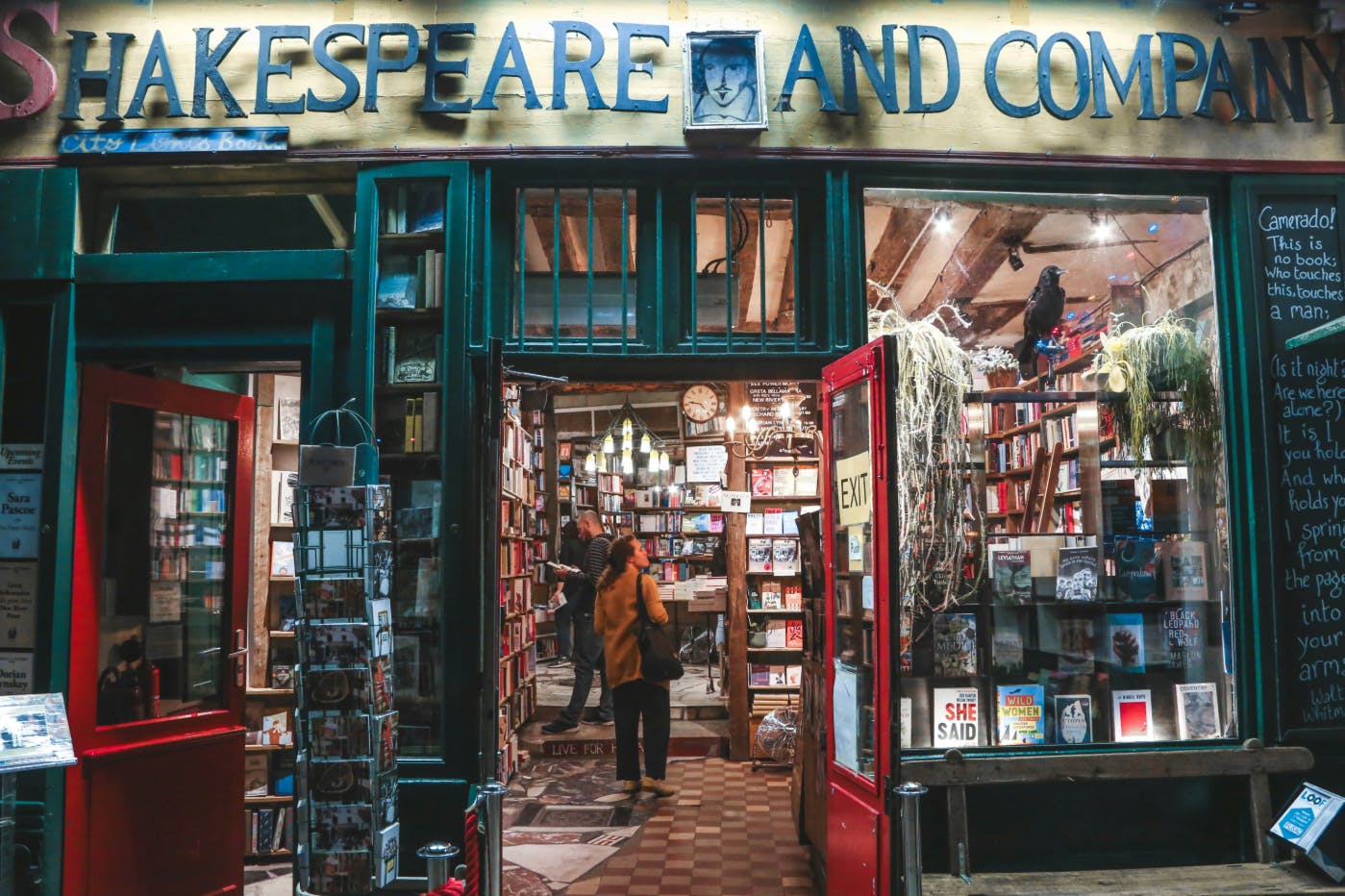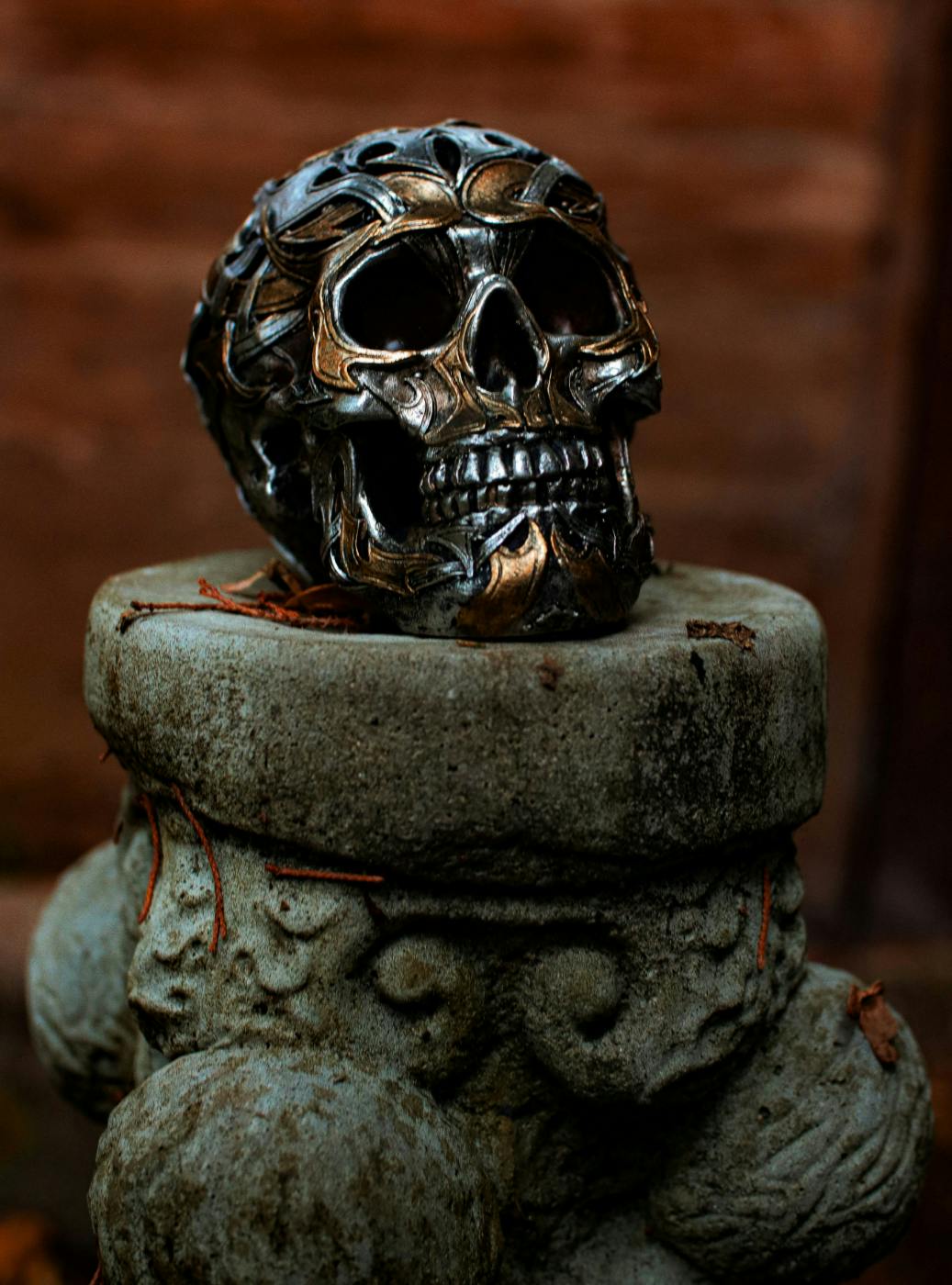
Now, marketing isn’t the villain here. In fact, when it’s done right, it can help good stories reach the right people. But marketing has goals, and nuance isn’t always one of them.
The Tragedy of the Marketing Team
Imagine this: William Shakespeare, hunched over his desk in 1601, quill in hand, scribbling the final lines of Hamlet. A candle flickers. The ink is still wet. He leans back, proud, exhausted, a little smug. “This,” he says to himself, “Shall absolutely wreck people.”
And then... the marketing team walks in.
“Bill, love it. Really. Big fan of the whole skull vibe. But we had a few notes.”
He blinks. Notes?
“Well, ‘to be or not to be’ is a bit... bleak. Can we make it more uplifting? Maybe ‘to thrive or to survive’? Something with energy.”
“Also,” someone adds, “the ghost thing? Super confusing. Could we clarify his backstory in a prequel blog post? You know—build the universe.”
“Oh,” says the brand strategist, flipping through the manuscript, “and we’re gonna need a call to action. Right now, it just kind of ends.”
This is the world we live in. Every story, every idea, every scrap of meaning is one stakeholder away from being turned into branded content with a click-through funnel and a hashtag strategy.
But what if Shakespeare did have a marketing team? Would Hamlet still hit as hard? Would Romeo and Juliet be just another teen romance with a merch line and TikTok collabs?
Let’s find out.

What Happens When Great Art Meets Brand Strategy
When marketing enters the room, things tend to get... tidier. Sharper headlines. Clearer calls to action. A/B-tested emotional arcs. Suddenly, your timeless meditation on mortality is being reviewed by someone asking, “But what’s the key takeaway?”
Now, marketing isn’t the villain here. In fact, when it’s done right, it can help good stories reach the right people. But marketing has goals, and nuance isn’t always one of them.
Great art makes us uncomfortable. It leaves room for silence, contradiction, and interpretation. Great marketing, on the other hand, tries to remove doubt. It wants clarity. Conversion. Consistency. Shakespeare’s greatest strength—his willingness to wade into complexity and leave threads unresolved—would be seen as a liability in most brand meetings.
If King Lear were a product, the pitch deck would need to explain the value proposition.
If Macbeth were a campaign, someone would definitely ask for a “cleaner arc” and maybe a redemption subplot.
And Hamlet? Probably wouldn’t pass the first stakeholder review. Too long. Too dark. “Can we break it into reels?”
This isn’t to bash marketing—it’s to ask a bigger question:
What happens to a story when it has to serve too many masters? What’s left when the message has been optimized into oblivion?
Shakespearean Characters as Brand Archetypes
If you squint hard enough, Shakespeare’s characters start to look like the leadership team of a very messy startup—or maybe a few bold (and doomed) brands you've seen in the wild.
Let’s break it down:
- Hamlet – The Visionary Founder: Brilliant. Troubled. Can’t make a decision to save his life—literally. Obsesses over mission and purpose to the point of paralysis. Has ideas no one understands, but somehow gets the press. Would definitely pivot the company mid-pitch.
- Lady Macbeth – The Ruthless CMO Sharp, driven, has a clear go-to-market strategy: domination. Believes in action over hesitation. Great at building momentum, not great at ethics. Famous for saying, “Screw your conscience, what’s our market share?”
- King Lear – The Legacy Brand in Denial. Once dominant, now crumbling from within. Gives away control to untested leadership (his daughters or, say, a flashy VC firm) and ends up alienated, wandering the metaphorical storm of irrelevance.
- Iago – The Disruptor Brand with a Vengeance Operates on chaos, whispers in the ears of the competition, and undermines trust from the inside. Not a great team player, but definitely shifts the narrative.
- Juliet – The Youth Market Idea Romantic, impulsive, trend-driven. Represents purity, passion, and the tragic consequences of trusting a brand that overpromises and under-delivers (cough Romeo cough).
These characters, in a modern brand context, aren’t just players on a stage—they're archetypes of the very real tensions brands face: ambition vs. caution, legacy vs. relevance, trust vs. disruption.
And imagine the boardroom with all of them in it. A bloodbath. But also… pretty on-brand for Shakespeare.

Marketing Tactics Applied to the Bard
Let’s say Shakespeare’s team went full modern marketing agency. What would that look like?
Well, first off, the plays aren’t plays anymore. They’re content ecosystems.
- Othello becomes a podcast series called “Jealous Much?” sponsored by a wellness brand and interrupted every 12 minutes with ads for CBD gummies and noise-canceling earbuds.
- Romeo and Juliet is repackaged as a limited-run Netflix series, with season 2 teased even though everyone dies at the end. (“Back from the grave... with a twist.”)
- The Tempest gets reimagined as an immersive AR brand activation in the metaverse, hosted by Prospero, now a lifestyle guru selling “emotional cleansing rituals” and beachwear.
- King Lear is released as a thought leadership whitepaper titled “Divesting Your Empire: How to Exit Gracefully Without Losing Your Mind.”
And of course, Hamlet becomes a carousel post on LinkedIn:
“To be or not to be?
TL;DR: Know your worth. Set boundaries. Kill your uncle (metaphorically). #Leadership #MentalHealth #GrowthMindset”
Marketing tactics would demand teaser trailers, TikTok challenges (#OutDamnSpotDance), SEO-driven blog content like “5 Red Flags Your Husband Is Plotting Murder,” and probably a webinar with Brutus and Iago called "When Trust Goes Wrong."
And sure, would this broaden the audience? Probably.
Would it water down the work? Definitely.
Which brings us to a bigger question: What would be lost?
What Would Be Lost?
Here’s the problem with too much polish: sometimes you buff away the soul.
If Shakespeare’s plays were flattened into key messages and clickable assets, we might gain reach, but we’d lose something harder to measure—the ache, the ambiguity, the friction that makes them timeless.
Because great stories don’t always resolve neatly, characters don’t always arc predictably. Motives are murky. Endings are unsatisfying. And that’s the point. Shakespeare gave us human nature in all its mess. He didn’t write for algorithms. He wrote for audiences willing to sit in the discomfort of betrayal, longing, madness, and meaning.
Marketing, with all its metrics and funnel logic, doesn’t love discomfort. It prefers clarity. Optimism. A clean close and a strong CTA. But not everything worth saying can be said in a scroll-friendly quote card.
If you asked a modern strategist to revise Macbeth, they'd likely cut the witches, nix the blood imagery, and make the lead more “relatable.” And suddenly, it’s not Macbeth anymore. It’s content. It’s safe. And it’s forgettable.
This isn’t an anti-marketing rant. It’s a reminder: the more you try to control a story, the more life you squeeze out of it. And the best brands—the truly unforgettable ones—know how to resist that urge just enough.
They leave room for nuance. They trust the audience. They understand that resonance is more powerful than reach.

But Wait… Could Shakespeare Use a Brand Strategy Today?
Let’s be honest: the man could’ve used a little help.
He had range, sure, but he also had a branding problem. Histories, comedies, tragedies—all under the same personal brand? Confusing. Half his audience didn’t know what they were walking into. Is this the funny one with cross-dressing, or the bleak one with eye gouging, or the weird one where they eat the kids?
And don’t even get us started on his titles. All’s Well That Ends Well? That’s a disclaimer, not a name. The Two Gentlemen of Verona? Feels like a buddy comedy that never made it past pilot season. 12th Night is a rom-com about a new marriage.
A smart brand strategy could’ve helped. Not to sanitize the art, but to sharpen the story’s reach. To build bridges between the vision and the audience. To ensure that people understood why they should care and what they were stepping into.
Because here’s the truth: even the most profound, poetic, powerful message won’t matter if it never gets heard. And Shakespeare, for all his genius, still had to fill the Globe Theatre. He had to sell tickets. He had to make people show up.
That’s what good brand strategy does. It doesn’t tell you what story to tell. It helps you tell the story you already believe in—but in a way that lands.
And that, in the end, might be the best collaboration of all: creative vision plus strategic clarity. Art meets architecture. Passion meets positioning.
Even the Bard could’ve benefited from that.
Summing Up: Telling the Truth Without Losing the Plot
At some point, every brand faces the same question Hamlet did: to be or not to be? Not in the existential sense (hopefully), but in the strategic one. Do we stay the course? Do we evolve? How do we honor the core of who we are while making sure people still care?
It’s tempting to believe that marketing ruins art—that strategy dulls the edge. But the truth is, when done right, strategy doesn’t take the soul out of the story. It sharpens it. It gives it form. It helps it travel.
At ThoughtLab, we live at that intersection.
We help brands tell their stories—truthfully, clearly, and in a way that moves people. Whether you’re a legacy business trying to stay relevant or a bold startup with something real to say, we’re here to make sure your voice doesn’t get lost in the noise.
We don't reduce stories to soundbites. We don’t cut corners for clicks. We work with you to find the tension, the truth, and the tone that make your brand unforgettable.
And then, we help you bring it to life.
Because the goal isn’t just to be seen, it’s to be remembered. And not just by your audience, but by yourself.
Open Question
What would your brand still say if it couldn’t use buzzwords, taglines, or tactics—just the truth?

